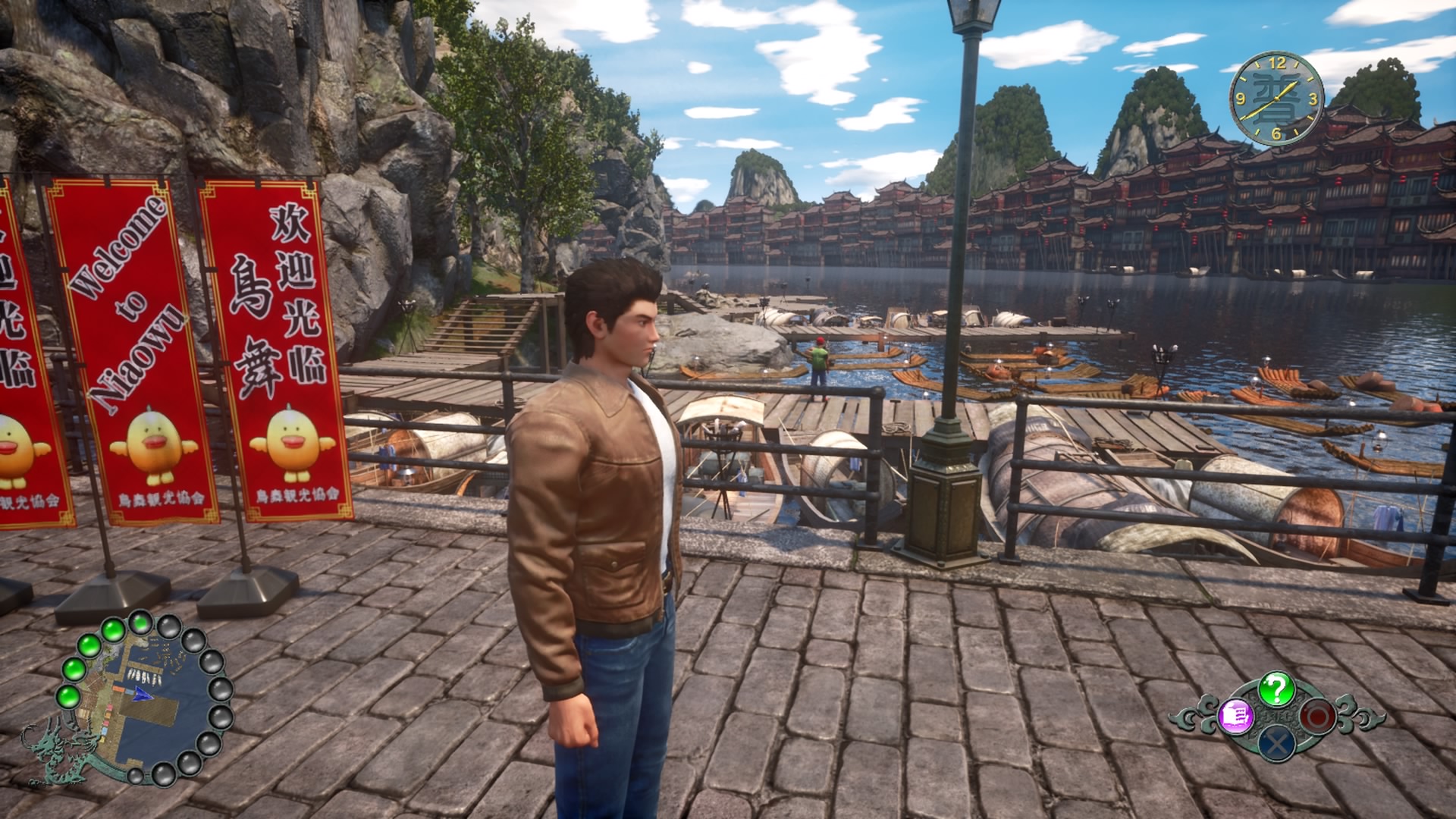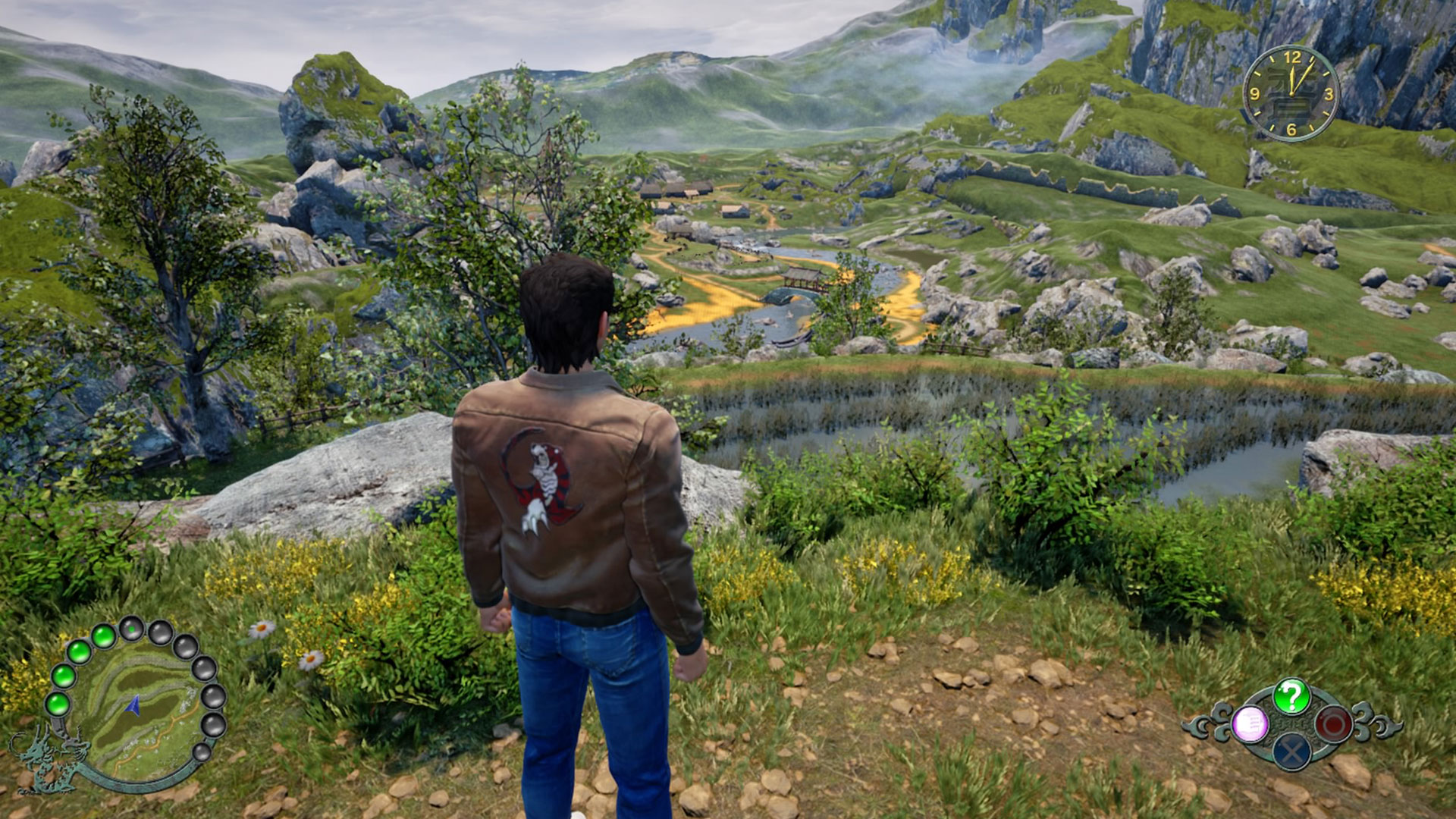GamesRadar+ Verdict
A magnificent, authentic, totally uncompromised sequel that crucially ignores virtually every gaming trend of the past 18 years.
Pros
- +
Impossibly rich game world
- +
Feels just like the originals
- +
Even the capsule toys play an important role
- +
The hidden object side-quest is really enjoyable
Cons
- -
‘Interactivity’ often boils down to tapping X
- -
Not enough emphasis on action scenes
- -
A few technical imperfections
Why you can trust GamesRadar+
It’s a good 20 years since the games industry used buzzwords like ‘F.R.E.E.’, which is an acronym for ‘Full Reactive Eyes Entertainment’. I know, it sounds like nonsense, but that was Yu Suzuki’s late ’90s vision for Shenmue. Not content with RPGs where the character would continue its running animation if you held a direction against a wall, he wanted the real deal; for the character to stop, to turn the handle on the door in full 3D, and to walk inside, without pausing to load. And once inside, the ensuing conversation would be fully voiced, and all the drawers would open on all the sideboards, letting you examine the contents inside. Fully reactive entertainment for your eyes, indeed. Well, even though gaming has moved on since Shenmue’s 2000 debut, you still can’t say all the above is true of RPGs, even in 2019. But hear this: it is true of Shenmue 3.
Somehow, in no small part thanks to the massive funding the game received on Kickstarter, Shenmue 3 is both massive and richly populated, oozing detail everywhere you look across its two large areas, namely the beautiful Bailu Village and the city-esque district of Niaowu. And it really doesn’t let on that this is the case for a great many hours. The opening scenes in Bailu village look nice, certainly, and the dialogue has that clunky Shenmue charm, but it isn’t until about 15 hours in that you realise just how ambitious this design is. Quite how it all would have worked on Dreamcast is hard to say, but it certainly does work on PS4.

Release date: November 19, 2019
Platform(s): PS4 and PC
Developer: Ys Net / Neilo
Publisher: Deep Silver
Now, let’s get this out of the way early on: despite running decently well, Shenmue 3 displays all the idiosyncrasies of the now rather aged Unreal Engine 4. Textures load in after a second or two, water reflections actually ‘reflect’ any 3D object above it on the screen space, shadows and details visibly pop in in the distance, and materials look just a little more ‘matte’ compared to real life. Even so, there are many moments of obvious beauty, with gorgeous lighting and phenomenal detail, and all despite the impressive scale. You can run across the city in one go and then examine individual fruit skewers on a market stall, all without a loading screen. Given that the game holds up to such scrutiny, the few technical hiccups are entirely forgivable. Somehow Shenmue still impresses even though it’s not really up to the highest modern standards. Maybe it’s because it still feels like a Dreamcast game, even emulating some haze filters typical of first-party Sega titles back in the day, making you feel impressed that Shenmue could look this good.
Ryo! What out for that… ouch

From a game design point of view, it’s simultaneously facepalm-inducing and a masterclass. It’s often dull, occasionally frustrating and sometimes even maddening. The phenomenon known as the ‘Quick Time Event’ that the original pioneered has thankfully passed through gaming’s digestive system in the past decade, but is back here, though thankfully it’s used sparingly. Even so, the prompts simply don’t give you enough time to react. You’ll be shouting at the screen “I literally pressed that!” but you’ll still be replaying the sequence, memorising which button comes when rather than reacting to the action. It’s the only time the game really comes undone. Well, that and the animal moves bit. It was never a monkey.
Mostly, however, the gameplay is just very mundane. Your daily life involves saying good morning to Shenhua, the girl from the end of Shenmue 2 who is your companion for this adventure, then heading out into a world that mostly couldn’t care less if you were in it or not. You can fish, collect capsule toys, play in arcades - though sadly there are no Sega classics to play this time, which is a real shame - and gamble tokens on several basic minigames. But where the old Shenmue’s capsule toys meant nothing and money were hardly used, now everything has a purpose and is interlinked. Capsule toys come in sets, and sets can be sold at pawn shops or traded for skill books. These teach you martial arts moves, which must be practiced and mastered at a dojo. Levelling up your Kung Fu works better when your vitality is full, so you need to buy food. You earn money by chopping wood, catching ducks or fishing, but the gambling system uses a separate currency: tokens. Tokens win prizes, prizes can be sold for money, money buys you moves. So basically all the mundane, apparently extraneous stuff is all channelled back into Ryo’s journey towards Kung Fu mastery. It’s never been so cohesive and it’s brilliantly done.
Window dressing? Pah!

Not least because capsule toys aren’t the only thing you can buy. Every single shop sells everyday items you can use, collect in sets or trade on. Every shop has a shopkeeper with a distinct character, and every character will speak with a decent voice in reply to whatever question Ryo is asking at the time. The sheer volume of recorded dialogue is frankly unbelievable, and the quality of the voice acting is the best it’s been in the series. It was vital that Ryo’s voice actor, Corey Marshall, returned to make the game feel authentic, and he’s put in a stellar performance here.
The rest of your time is spent doing some basic, rather laboured detective work, trying to find out who can help with the current problem, usually opening up a new area of the map to explore. Aside from that, the mini-games are painfully basic and mostly involve tapping X. Even so, they do the job - and in terms of martial arts training, you could argue it teaches discipline and patience. For many gamers that just isn’t enough, but then the venn diagram of that kind of gamer and people who master a real martial art probably doesn’t have much crossover. That said, while the new skill move editor is great, allowing you to map five mastered moves to R2, toggled with L1/R1, the fighting itself still feels lightweight compared to Virtua Fighter. And since Shenmue started life as the Virtua Fighter RPG, that’s not quite good enough.
I love Choubu Chan

The gamiest element I’ve found is something I didn’t discover until I’d already been running around the second environment for a good 15 hours. Choubo Chan is a small bird character and there’s a camouflaged Choubo to be found in literally every shop in the city - so camouflaged I only found one before I started looking. Acting as a very fun hidden object game, it makes you go in every shop and examine the wealth of 3D models in the game as you search for him. At last, it’s something genuinely fun and doesn’t involve just tapping X.
Without this level of detail, Shenmue 3 just wouldn’t work at all. No other single element of the game is particularly fun. But it’s all wrapped up in this astonishingly rich world that consistently shows itself to be both beautifully balanced and consistently deeper than you expect. Details reveal themselves only when you stop and look, like the in-jokes on the books in the bookshop, or the way Ryo’s One-Inch Punch goes from sloppy Joe to looking exactly like Bruce Lee in tiny increments.

Similarly, the way Shenhua will sit and talk to you about Japan and her childhood until it just gets too late to stay up any more is exactly the sort of thing that made the first game so great. There’s a real sense of ‘coming home’, which is then taken away with the culture shock of leaving Shenhua’s house in Bailu village for the hotel room in Niaowu. But that just gives it something few other games can match; a game world you’re properly invested in. And so when the few big story beats come in, they have much more impact. I even made Ryo phone his old housekeeper, Ine-san, back in Dobuita before a particularly dangerous part of the story, which brought an actual lump to my throat. But this richness is still sadly finite and it’s all finished in 35 hours if you push on through, with potential for easily double that. My advice is to take your time and embrace it all. A fourth game’s existence is still an uncertainty, after all.
So many modern reworkings and sequels have ripped up cherished, established canon recently, but not Shenmue 3. This game works because it’s so genuine, honest and feels 100% authentic next to the originals. You have to take into consideration that this game was literally made for its own fans and in that respect it’s a massive success. Despite its wholly predictable flaws, it’s a better Shenmue 3 than I ever dared imagine and feels like no other game except its own predecessors. Fans couldn't have asked for a more authentic sequel.
Reviewed on PS4.
More info
| Genre | "Action RPG" |
| Description | The sequel to Yu Suzuki's Dreamcast classic(s). |
| Platform | "PS4","Xbox One" |
| Alternative names | "Shenmue III" |
Justin was a GamesRadar staffer for 10 years but is now a freelancer, musician and videographer. He's big on retro, Sega and racing games (especially retro Sega racing games) and currently also writes for Play Magazine, Traxion.gg, PC Gamer and TopTenReviews, as well as running his own YouTube channel. Having learned to love all platforms equally after Sega left the hardware industry (sniff), his favourite games include Christmas NiGHTS into Dreams, Zelda BotW, Sea of Thieves, Sega Rally Championship and Treasure Island Dizzy.




